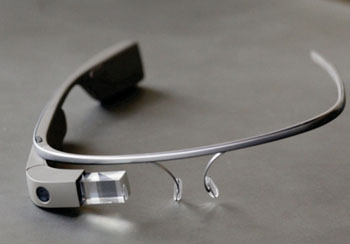Google Glass Could Enhance Surgical Practice
By HospiMedica International staff writers
Posted on 08 May 2014
An exploratory study reveals potential applications for Google Glass in the surgical setting, particularly in relation to training.Posted on 08 May 2014
Researchers at Maria Fareri Children's Hospital (MFCH; Valhalla, NY, USA) obtained a Google (Menlo Park, CA, USA) Glass device through Google's Explorer program to test its applicability in daily pediatric surgical practice and in relevant experimental settings. Glass was worn daily for four consecutive weeks at the MFCH. A daily log was kept, and activities with a potential applicability were identified. The performance of Glass was evaluated for the activities identified, and in vitro experiments were conducted where further testing was indicated.

Image: Google Glass (Photo courtesy of Google).
The results showed that wearing Glass throughout the day was well tolerated. Colleagues, staff, families, and patients overwhelmingly had a positive response to Glass. Useful applications identified included hands-free photo/video documentation, hands-free telephone calls, looking up billing codes, and internet searches for unfamiliar medical terms or syndromes. Drawbacks encountered were low battery endurance, data protection issues, poor overall audio quality, and long transmission latency that was combined with interruptions and cut-offs during internet video-conferencing. The study was published in the April 2014 issue of the International Journal of Surgery.
“A big issue with Glass is how to handle patient privacy, particularly because the device connects to the internet via WiFi and thereby streams its data through Google’s servers,” said lead author Oliver Muensterer, MD, PhD. “By the way, these issues are the same that currently exist with physicians using their smartphones for applications pertaining to patient care, including taking photos of pertinent findings. It would be great if an encrypted version of Glass were available in the future for medical use, including the exclusive streaming to secure servers.”
“In the future, we are going to study how the projection of real-time info such as vital signs, laboratory values, and X-rays onto the head-up display during a polytrauma resuscitation can aid the trauma leader in making critical decisions in a timely fashion without the need to look it up on a separate computer screen,” added Dr. Muensterer. “This is just one of the clinical applications we envision for Glass.”
Google Glass is a wearable computer with an integrated camera, a global positioning system (GPS) receiver, bluetooth connectivity, a microphone, and an optical head-mounted display (OHMD) that sits unobtrusively in the corner of a glasses frame.
Related Links:
Maria Fareri Children's Hospital














